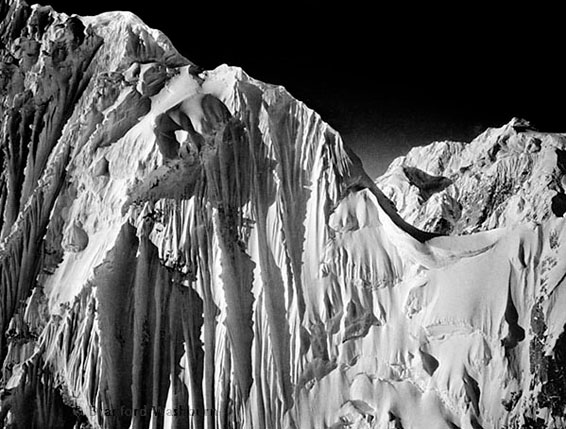A clip from The American Ruling Class by former Harper’s Magazine editor Lewis Lapham:
See the whole film on Vimeo here.

A clip from The American Ruling Class by former Harper’s Magazine editor Lewis Lapham:
See the whole film on Vimeo here.
If satire isn’t your cup of tea then take a pass on this but it’s very well done:
(I hadn’t heard of Judah P. Benjamin before. Grim to think how things might have turned out if he’d been successful in his efforts on behalf of the Confederacy.)
Remembering Robert Burns, national poet of Scotland, with windowpanes of words:
Walk around the market town of Dumfries, Scotland, and at first glance you’ll see what looks like a kind of graffiti in the windowpanes — faint etchings in some, and in others verses written boldly in thick black pen. A few are the surviving work of Scotland’s national poet, Robert Burns, etched into the glass centuries ago when he stayed at the Globe Inn. Others are the work of contemporary poets, writing to pay him tribute. January 25th marks the 255th anniversary of Burns’ birth, and around the world, Scots and devotees of the poet alike will gather to commemorate the event with Burns Suppers — eating haggis, raising a wee dram of whisky (whiskey to us Americans), and most importantly, reading his poetry aloud. Burns was only 37 years old when he died, but was a prolific writer, giving the world “Auld Lang Syne,” “A Red, Red Rose” and “To a Mouse,” among others.
Follow the link above to hear one of his poems recited, “Address to a Haggis”.
Christopher Lydon will be back on WBUR Thursday nights starting tonight! Years ago he hosted a morning program on BUR, The Connection, which was the best radio show I’ve ever listened to. The show covered just about every topic you could imagine and Lydon was a great host – got good guests and actually did his homework before the show so that he and his guest could have an intelligent on-air conversation. He took the job very seriously. The Connection started off as a local program then went national after a few years – still had a Boston focus though. Anyhow, Lydon was let go after he and the station couldn’t negotiate a new contract. The new host was decent but the show wasn’t nearly as good as when Lydon was host. Lydon went off to create Radio Open Source, which is what BUR will be broadcasting on Thursday nights. I listened to a number of episodes when it was internet only – all good – but tuning in required I go a bit “off the beaten path” so I didn’t listen often. In contrast, BUR is my default station. I’ll be glad to hear Lydon and I’m glad he’ll be getting a wider audience again. He’s an excellent journalist.
Archive of The Connection broadcasts here. (I think Lydon’s last broadcast was March 9, 2001.)
Three things to ask yourself after you’ve spent some time looking at a work of art:
The same questions can be asked of any endeavor which requires creativity, e.g., writing, scientific research, etc.
Sculptor Richard Serra in conversation with Charlie Rose in 2001:
More here.
“Eleonor and Giles Robertson, Edinburgh, 1987”
“Mont St. Michel”, 1977
Continuing on the theme of modernist photographers…
“Blast Furnace and Dust Catcher” (1927, from his River Rouge series)
Andrew Gelman’s post, So much artistic talent, got me thinking about what work I like and why. I’m drawn to black and white photography and was serious about it myself for about four years. (I haven’t been in the darkroom since my daugher was born – just difficult to carve out the time to photograph and print with family commitments.) This post and the next few list some photographers whose work I admire.
 Mt. Huntington’s Incredible North Face. Alaska, April 2, 1978.
Mt. Huntington’s Incredible North Face. Alaska, April 2, 1978.
Washburn lived in Lexington. He was in his nineties when he passed away a few years ago. Panopticon Gallery in Boston carries his work. I prefer work which draws you in rather than tries to inspire awe. In terms of b&w photography, the result is that I tend to gravitate towards smaller prints rather than large ones. Washburn’s work is the exception that proves the rule. Circa 2005, back when they were in Waltham, Panopticon had a show of his prints where the typical size was on the order of 4 ft x 5 ft. Big as they were they were very intimate photographs. IIRC, Panopticon had scanned the negatives, cleaned them up digitally, and then printed them on an inkjet printer which used six tones of carbon-based ink. The prints were phenomenal.
(As an aside, I get a kick out of the fact that Washburn shot many of his negatives while hanging out the side of a single-engine airplane from N thousand feet up. There’s a great picture of him at the front of Mountain Photography sitting in the door of a Fairchild 71 in Valdez, AK with a big smile on his face holding his large format camera. He clearly loves what he’s doing.)